Middle East
Deadly US strike hits Yemeni migrant centre | Israel-Palestine conflict News
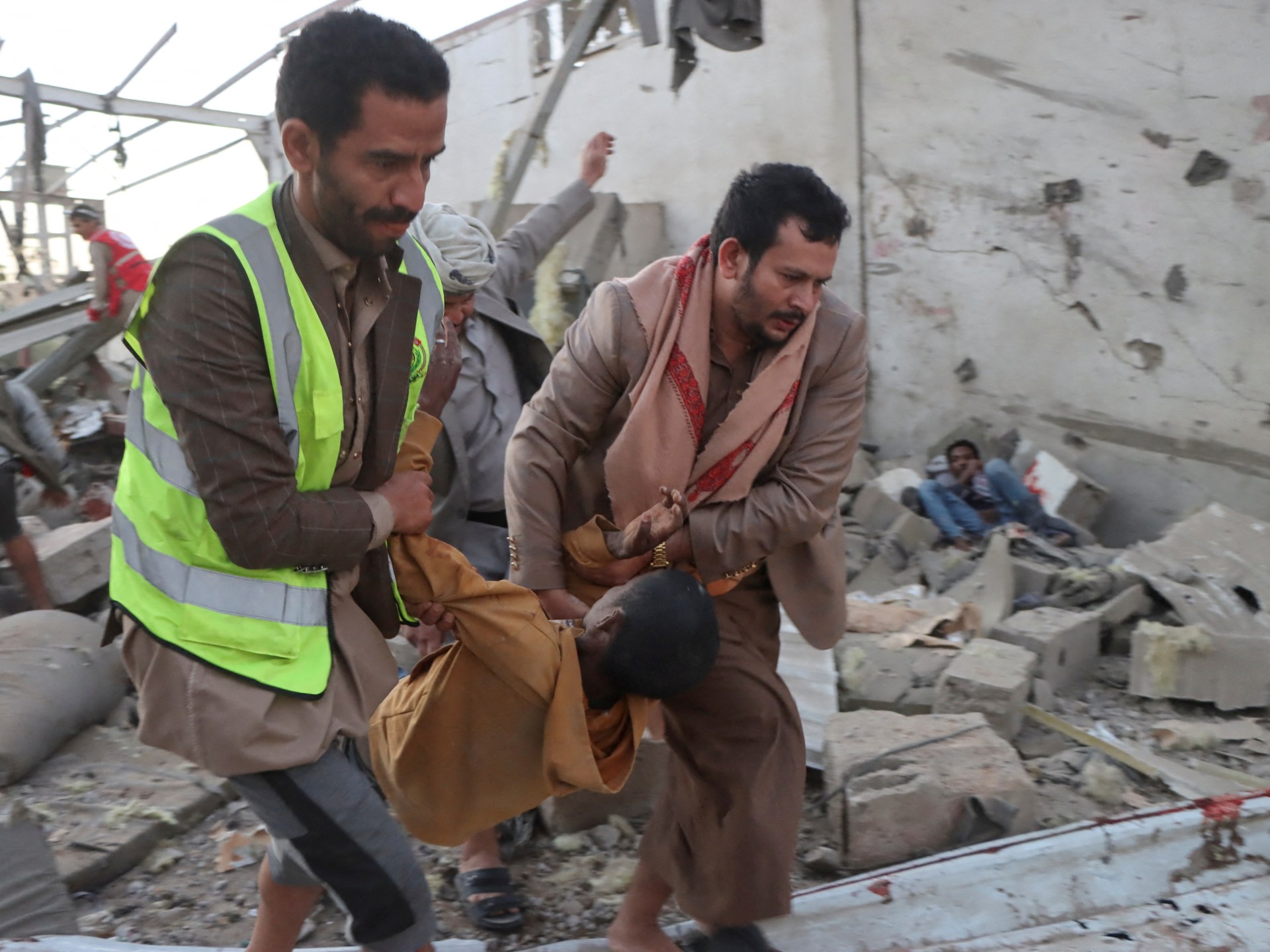
United States military strikes in Yemen have killed 68 people and wounded 47 as they hit a detention centre holding African migrants, according to Houthi-affiliated media reports.
The strike in the Saada governorate, a Houthi stronghold, is the latest incident during a decade of conflict to kill African migrants from Ethiopia and other nations who risk crossing Yemen for a chance to work in neighbouring Saudi Arabia.
The US military’s Central Command (CENTCOM), responsible for military operations in the Middle East, refused to offer details of the latest strikes but acknowledged carrying out more than 800 hits on targets in Yemen since mid-March. More than 250 people are now reported to have been killed in the campaign.
Graphic footage aired by the Houthis’ Al Masirah TV news channel showed what appeared to be human bodies and injured people at the site. The Houthi-run Ministry of Interior said some 115 migrants had been detained at the site before the strike.
The broadcaster showed footage of bodies stuck under the rubble and of rescuers working to help the casualties.
Each year, tens of thousands of migrants brave the Eastern Route from the Horn of Africa, seeking to escape conflict, natural disasters and poor economic prospects by sailing across the Red Sea towards the oil-rich Gulf region.
Many hope for employment as labourers or domestic workers in Saudi Arabia and other Gulf Arab countries, though they face a perilous journey through war-torn Yemen.
The Houthis, who are accused of detaining and abusing the migrants, allegedly earn large sums smuggling them over the border. Those seeking to cross take a significant risk, with the threat of detainment and abuse added to by the long-running conflict.
Middle East
Fires continue to rage at key Iran port as explosion death toll rises to 46 | Oil and Gas News
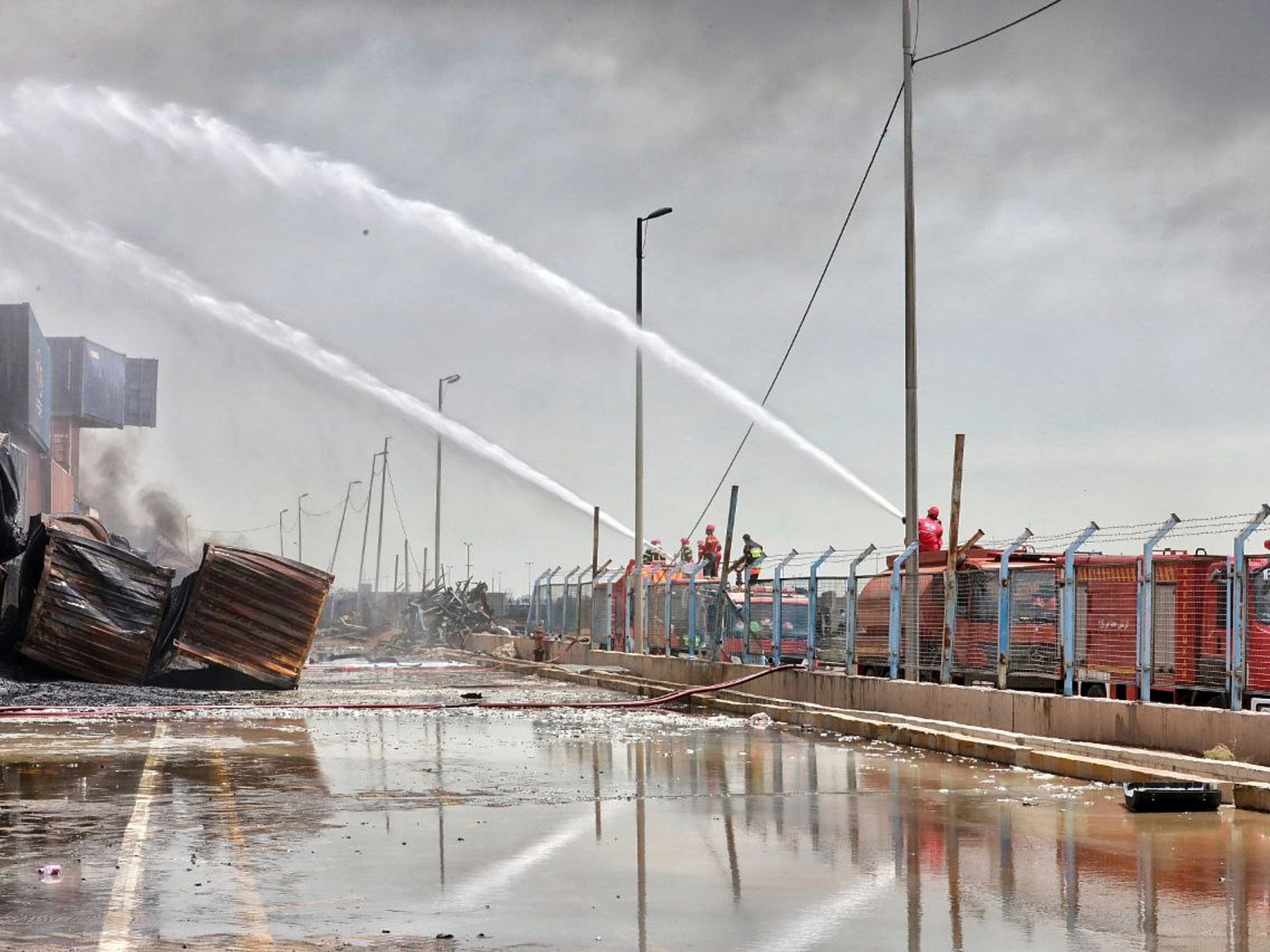
Interior Minister Eskandar Momeni says the ‘culprits have been identified’ and the explosion was caused by ‘negligence’.
Firefighters continue to battle raging fires at Iran’s largest commercial port, Bandar Abbas, two days after a massive explosion killed dozens and injured more than 1,000 people, Iranian state media report, as questions linger as to the blast’s cause.
“The death toll in the Shahid Rajaei Port fire has reached 46,” the official IRNA news agency reported on Monday, quoting Mehrdad Hassanzadeh, the crisis management director for Hormozgan province, where the port is located. Most of the injured had since been released after treatment, he added.
Only “120 wounded are still in hospital”, Interior Minister Eskandar Momeni, who is visiting the affected area, told state TV on Monday.
The blast took place on Saturday at Shahid Rajaei Port in Iran’s south near the strategic Strait of Hormuz, a waterway through which one-fifth of global oil output passes.
Iran’s state TV showed images of firefighters dousing the flames, saying the damage would be assessed after the fire is fully brought under control.
Heavy charcoal-black smoke continued to billow over low flames at part of the site, above which a firefighting helicopter flew, pictures from the Iranian Red Crescent showed.
What caused the blast?
It was not immediately clear what caused the explosion, but the port’s customs office said it likely resulted from a fire that broke out at a depot storing hazardous chemical materials.
Momeni said on Monday that “culprits have been identified and summoned”, and that the blast was caused by “shortcomings, including noncompliance with safety precautions and negligence”.
Iran’s Supreme Leader Ayatollah Ali Khamenei has ordered a thorough investigation into the incident.
In the face of external and expert speculation, Iran has denied reports that the blast was caused by a shipment of missile fuel.
National day of mourning declared
On Sunday, President Masoud Pezeshkian visited hospitals treating the wounded in Bandar Abbas. Since the explosion, authorities have ordered all schools and offices in the area closed and urged residents to avoid going outside “until further notice” and use protective masks when doing so.
Authorities declared Monday a national day of mourning, while three days of mourning began on Sunday in Hormozgan province.
The explosion took place as Iranian and US delegations met in Oman for high-level talks on Tehran’s nuclear programme, with both sides reporting progress.
While Iranian authorities so far appear to be treating the explosion as an accident, it also comes against a backdrop of years of shadow war with regional enemy Israel. Iran has in the past accused Israel of being behind such attacks.
According to The Washington Post, Israel launched a cyberattack targeting the Shahid Rajaei Port in 2020.
Middle East
A protective force must be deployed to occupied Palestine | Israel-Palestine conflict
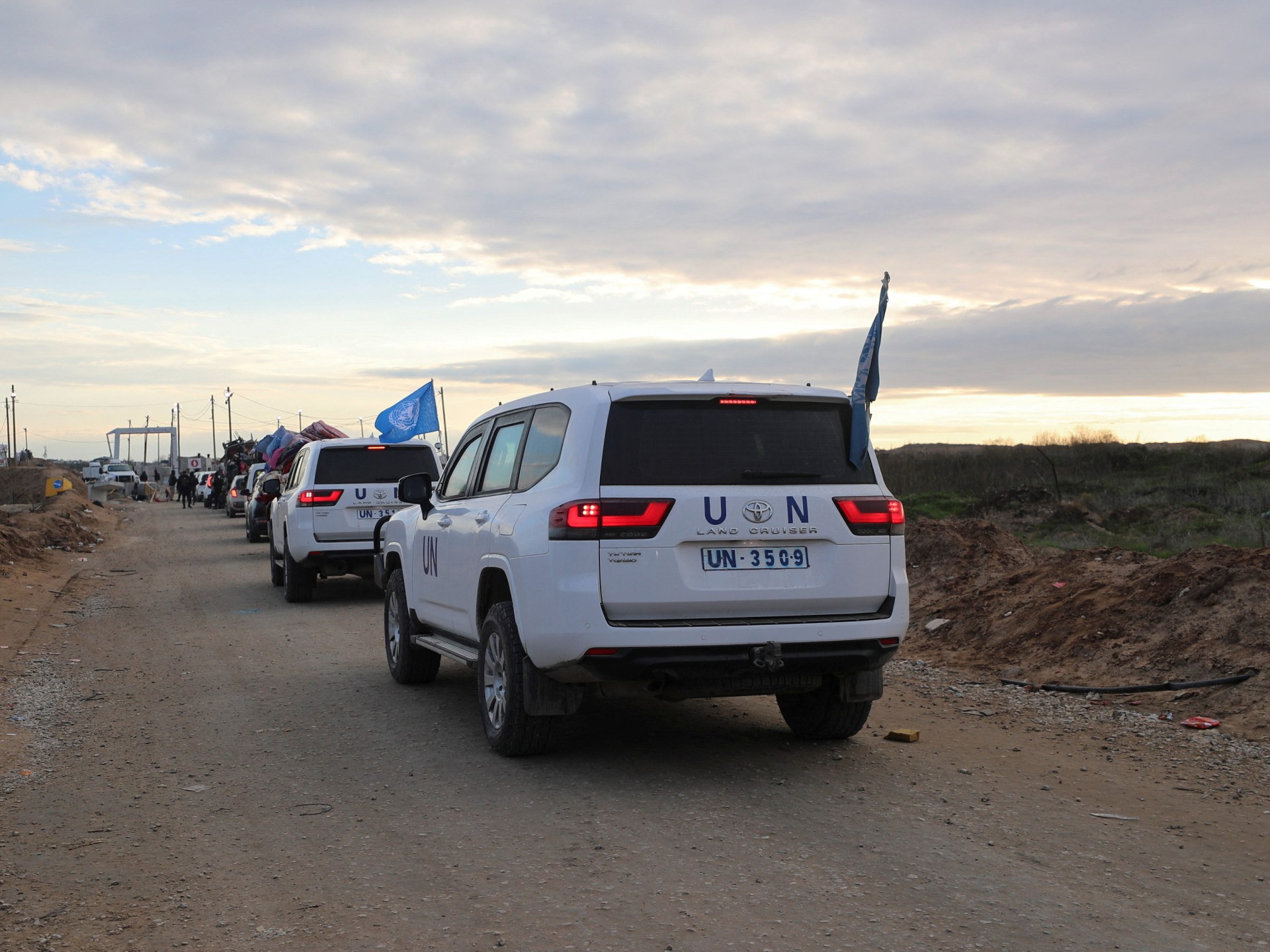
In the past few weeks, demands for the deployment of a protective force in Gaza and the West Bank have resurfaced. They have come from health professionals and medical organisations, Palestinian NGOs and even Arab civilians. Last year, the Arab League and human rights organisations also called for a peacekeeping force to be sent to Gaza.
In light of the global normalisation of livestreamed genocide and the political reluctance to enforce international law, this demand represents a bare minimum measure to safeguard Palestinians against unimaginable horrors.
The demand is firmly grounded in international law. In Gaza, a peacekeeping force could advance the duty of states and the United Nations to protect a people facing genocide, war crimes and crimes against humanity under investigation at the International Court of Justice and International Criminal Court. In both Gaza and the West Bank, such forces could support the process of ending the occupation, as demanded by the UN General Assembly and the International Court of Justice.
And yet, the demand for a protective force faces major challenges. The crucial question is: Can they be overcome?
The justification for a protective force
The situation in Gaza and the West Bank has reached unprecedented urgency and extremity. Military pressure from armed groups in Lebanon and Yemen exerted in an attempt to protect the Palestinian people did not manage to stop the atrocities, and the Lebanese and Yemeni people have paid a heavy price.
That is why an international protective force is urgently needed. Its deployment would fulfil what the Palestinian population is asking the international community to do: to protect them. This force would serve as a “human shield” – not in the derogatory sense weaponised by the Israeli military to justify its genocide by framing the entire Palestinian population as human shields but in the sense of a literal peaceful barrier between the Palestinians and their annihilation.
Its presence could mean the difference between life and mass death for civilians who have faced a year and a half of bombardment, siege and starvation.
Moreover, this force offers a critical alternative to more sinister “solutions”. As Israel escalates its genocidal campaign, imposing conditions designed to destroy Palestinian life, the United States has floated the idea of deploying its troops to Gaza to “take it over”.
Such a move would constitute an illegal US invasion of Palestine, further entrenching colonial violence under the guise of maintaining “stability”. By contrast, forces tasked with the responsibility to protect Palestinians – and not imperial and colonial interests – could provide a legitimate, internationally grounded countermeasure.
The challenges of forming a protective force
Deploying protective forces through a mandate of the UN requires a UN Security Council resolution. The US will most definitely veto any attempt to create such a force, just as it has struck down various ceasefire resolutions, in effect enabling genocide and blocking any effort to uphold even the most basic principles of humanity under the UN Charter.
The situation is undoubtedly growing more hopeless under a US administration that is actively supporting the mass expulsions and deportations of the Palestinian population from Gaza. US President Donald Trump himself has described the Gaza Strip as a “demolition site” and expressed his desire for the US to turn it into the “Riviera of the Middle East”.
Since a resolution calling for a protective force would be blocked at the Security Council, the alternative is for a multilateral call to action through the UN General Assembly. There, too, US coercive power heavily influences votes – including that of the Palestinian Authority – but it is still a viable option. The earliest such a move could happen is at the next session of the General Assembly in May and would require immense diplomatic pressure.
A vote for a protective force by the General Assembly would not be binding and would require approval by the Security Council. However, it could help create a coalition of countries signalling their willingness to intervene with concrete protection measures in defence of Palestinian life after 19 months of empty words without tangible action.
Another challenge is that the mechanism of deploying peacekeeping forces has long been regarded with suspicion by states in the Global South – and for a good reason. UN peacekeeping troops have often served as tools of policing in the Global South and as extensions of imperial control, at times committing atrocities themselves.
Historically, peacekeeping has largely aligned with imperial interests, rarely opposing them. Troop-contributing countries often have questionable military alliances, and peacekeeping operations depend on funding from large donors, such as the US. A good example of this is the UNIFIL peacekeeping mission in Lebanon, which has an unusually high European presence and which has failed to protect the south of the country from Israel’s aggression.
Given all these challenges, do we abandon the demand for a protective force in occupied Palestinian territory? Absolutely not.
A radical reimagining of protective forces
The obstacles are real, but the demand for a protective force is legitimate. It comes from within multiple sectors of Palestinian society itself and is endorsed globally by antigenocide individuals and groups.
In a recent petition, Palestinian and international health workers proposed a model: a neutral, multinational protective mission – not to mediate, but to shield. Their demands include excluding nations complicit in the assault from contributing troops and a mandate for the protective force to physically shield Palestinian civilians and healthcare workers, to restore safe humanitarian and medical corridors, and to support Palestinian-led rebuilding of Gaza’s obliterated infrastructure.
Similarly, the Palestinian NGOs Network has called for international protection, open crossings into Gaza and guaranteed safe aid corridors.
Meanwhile, Egyptian civilians have repeatedly declared their readiness to enter Gaza as a civilian shielding force if borders are opened. This underscores the potential for people-powered protection alongside formal mechanisms.
To translate into action these multiple calls, a radical reimagination of what a protective force might look like and how it could work is required.
First, we need states uninvolved in the genocide and civil society groups to push for bypassing the UN Security Council. They must focus all efforts and leverage on the UN General Assembly’s Emergency Special Session in May to stand up to US pressure and push for a vote on a peacekeeping mandate.
Second, we need new South-South alliances. This means strategic partnerships among Global South nations uninvolved in the genocide to fund and staff a mission free from imperial influence that can proceed even without Security Council permission.
Third, we need an unprecedented mobilisation of civil society in a single direction: pressuring governments to endorse and participate in a truly neutral protective force.
The US would oppose the creation of new coalitions that centre Palestinian life and present themselves as the Southern champions of the responsibility to protect doctrine. It would see this as defiance of its hegemony and the Western monopoly over antigenocide discourse, and it would use its veto at the council. However, the countries and civil society groups involved in establishing the protective force should disregard the veto, form the mission autonomously and defy the genocidal international order in which we live.
The challenges facing this radical reimagination effort are formidable. But the alternative is to continue leaving Palestinian lives unprotected – at the mercy of an intensifying process of settler-colonial extermination. We must act now and push for a protective force for occupied Palestine.
The views expressed in this article are the authors’ own and do not necessarily reflect Al Jazeera’s editorial stance.
Middle East
US strikes on Yemen kill dozens as migrant detention centre hit | News
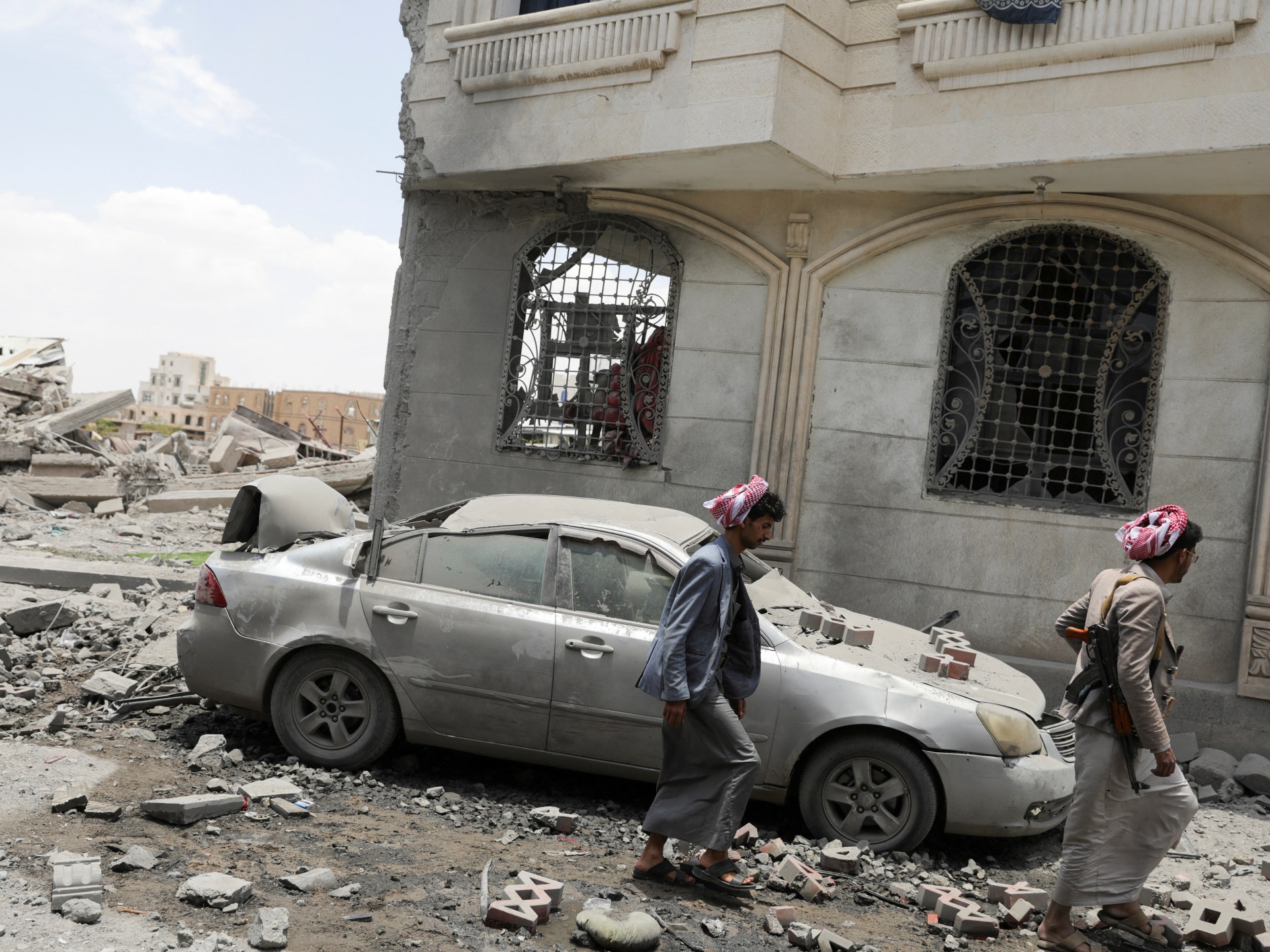
Attack on capital Sanaa raises death toll to more than 220 people since US strikes on Yemen launched in mid-March.
United States military strikes on Yemen’s capital, Sanaa, have killed dozens of people and wounded many more, according to Houthi-affiliated media reports.
The attacks killed at least eight people around the city, while at least 68 died in a strike on a migrant detention centre, Houthi media reported on Monday.
The US military’s Central Command (CENTCOM), responsible for military operations in the Middle East, refused to offer details of the latest strikes but acknowledged carrying out more than 800 attacks on targets in Yemen since mid-March. More than 250 people are now reported to have been killed in the campaign.
The Al Masirah TV satellite news channel reported early on Monday that eight people were killed in a US strike targeting the Bani al-Harith district north of Yemen’s capital, Sanaa.
The US also struck Yemen’s Amran and Saada governorates on Sunday night, Houthi officials said, and two people were reported killed in an earlier attack on Sanaa.
“Eight martyrs, including children and women,” the channel reported after the attack that targeted the Thaqban area in Bani al-Harith.
Detained migrants caught in the crossfire
A later report by the station showed graphic footage and said that 68 people had been killed when a migrant detention centre was hit in the strikes on Saada.
The facility had been holding about 100 people from Ethiopia and other African countries detained while crossing Yemen in a bid to secure work in Saudi Arabia.
Houthi rebels allegedly earn large sums smuggling migrants over the border, but those seeking to cross are taking a significant risk, with the threat of detainment and abuse added to by long-running conflict.
A strike by the Saudi-led coalition battling the Houthis in 2022 hit a detention centre killing 66 detainees, according to a United Nations report.
The Houthis shot dead 16 detainees who fled after the strike and wounded another 50, the UN said.
The latest US bombing raids raise the death toll from US strikes on Yemen to more than 250 people, according to a tally of Houthi announcements on casualties.
The US military said on Sunday that since March 15, it had struck more than 800 targets in Yemen and killed hundreds of rebel fighters.
“These strikes have killed hundreds of Houthi fighters and numerous Houthi leaders,” CENTCOM said. It added that the attacks on Yemen would continue but details would continue to be restricted.
“To preserve operational security, we have intentionally limited disclosing details of our ongoing or future operations,” CENTCOM said.
“We are very deliberate in our operational approach, but will not reveal specifics about what we’ve done or what we will do,” it added.
The US has not commented on civilian casualties from its intense bombing of Yemen, which began on March 15 and has involved almost daily attacks.
US forces say they are targeting the Houthis because of the group’s attacks on shipping in the Red Sea, and on Israel. The Houthis say they launched their attacks on Red Sea shipping linked to Israel in retaliation against Israel’s war on Gaza.
On April 18, a US strike on Yemen’s Ras Isa fuel port killed at least 74 people and wounded 171 others in the deadliest-known attack to date by the US on Yemen.
The increase in US attacks also comes as US President Donald Trump intensifies efforts to pressure Iran – the main supporter of the Houthis – into agreeing to a new deal on its nuclear capabilities.
The US is conducting strikes from its two aircraft carriers in the region – the USS Harry S Truman in the Red Sea and the USS Carl Vinson in the Arabian Sea.
Houthi forces, nevertheless, continue to launch missiles at Israel and US vessels in the Red Sea, as well as US military drones.
-

 Africa1 day ago
Africa1 day agoUganda declares end to Ebola outbreak
-
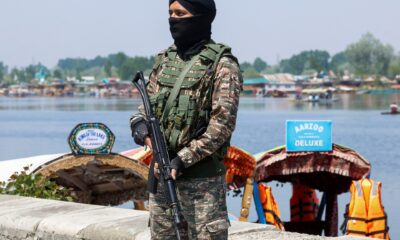
 Conflict Zones13 hours ago
Conflict Zones13 hours ago‘Burst balloon’: How Pahalgam attack shattered Modi’s Kashmir narrative | Narendra Modi News
-
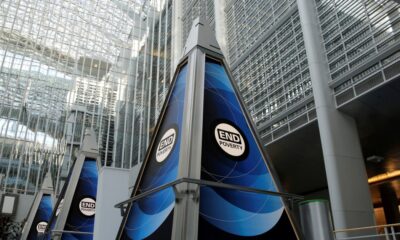
 Middle East23 hours ago
Middle East23 hours agoSaudi Arabia, Qatar to settle Syria’s outstanding debt to World Bank | Business and Economy News
-
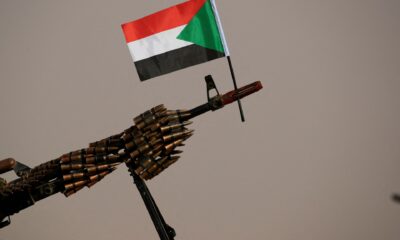
 Middle East22 hours ago
Middle East22 hours agoSudan Doctors Network accuses RSF of ‘war crimes’ after 31 killed | Sudan war News
-
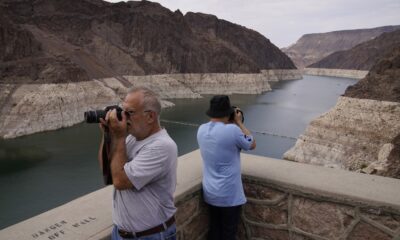
 Lifestyle2 days ago
Lifestyle2 days agoCampgrounds and visitor centers at federal lakes are closing amid Trump’s budget cuts
-

 Europe2 days ago
Europe2 days agoWhat to know about Trump’s proposal to carve up Ukraine
-

 Lifestyle2 days ago
Lifestyle2 days agoWhite House journalists use annual press dinner to celebrate First Amendment
-
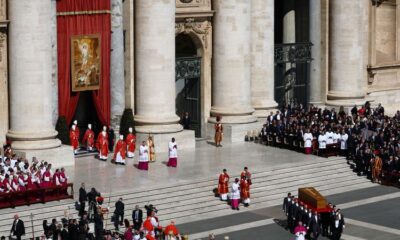
 Europe1 day ago
Europe1 day agoFrancis celebrated as ‘pope among the people’ in Vatican funeral attended by massive crowd




